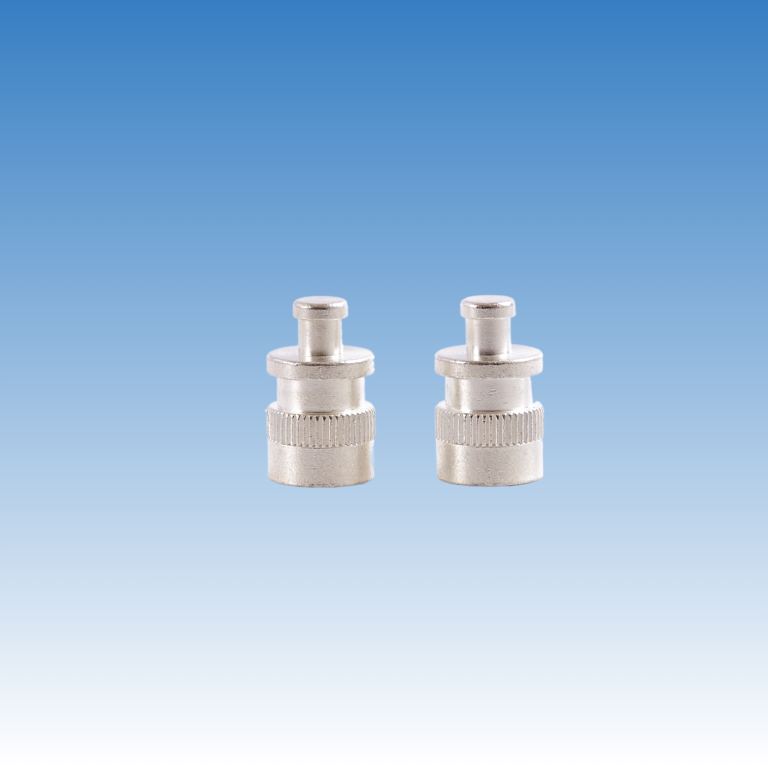Precision fasteners, as high-precision and high-performance mechanical connectors, are significantly influenced by material selection, which affects both performance and manufacturing efficiency. Easy-cutting materials are widely used in precision machining due to their superior machinability, relatively low cost, and high efficiency. This article introduces several commonly used easy-cutting materials, including their characteristics, advantages and disadvantages, and typical application scenarios.
Ⅰ. Definition and Characteristics of Easy-Cutting Materials
Easy-cutting materials are those that exhibit low cutting resistance, produce good surface quality during machining, and cause minimal tool wear. The key characteristics of easy-cutting materials include:
- Excellent Machinability: They produce short, easy-to-break chips during cutting, which reduces processing time and improves production efficiency.
- Low Tool Wear: Elements such as sulfur, phosphorus, or lead are often added to improve lubrication and reduce tool wear, extending tool life.
- Good Dimensional Stability: They undergo minimal thermal deformation during machining, maintaining high dimensional precision.
Ⅱ. Commonly Used Easy-Cutting Materials and Their Characteristics
- Easy-Cutting Steel
Easy-cutting steel is one of the most commonly used easy-cutting materials. It is typically low-carbon or medium-carbon steel with added sulfur, phosphorus, or lead.
- Characteristics:
- Excellent cutting performance, suitable for mass production.
- Moderate strength, meeting general mechanical performance requirements.
- Low cost.
- Disadvantages:
- The addition of sulfur and phosphorus may reduce the toughness and welding performance of the steel.
- Poor corrosion resistance, making it unsuitable for high-humidity or corrosive environments.
- Application Scenarios:
- Automotive parts (e.g., bolts, nuts).
- General mechanical components and fasteners.
- Easy-Cutting Stainless Steel
Easy-cutting stainless steel is a type of stainless steel alloy that incorporates sulfur or selenium to improve machinability.
- Characteristics:
- Excellent machinability with reduced tool wear.
- Retains the corrosion resistance of stainless steel.
- Higher strength than other easy-cutting materials.
- Disadvantages:
- The addition of sulfur may reduce the material’s ductility and toughness.
- Higher cost compared to regular stainless steel.
- Application Scenarios:
- Medical devices.
- High-end precision machinery fasteners.
- Fasteners used in corrosive environments.
- Brass (Easy-Cutting Copper Alloy)
Brass is an alloy of copper and zinc, and when lead is added, it becomes an easy-cutting copper alloy.
- Characteristics:
- Excellent machinability.
- Good corrosion resistance.
- Excellent electrical and thermal conductivity.
- Aesthetically pleasing, suitable for decorative components.
- Disadvantages:
- Lower strength and hardness, unsuitable for high-stress applications.
- The addition of lead may pose environmental concerns.
- Application Scenarios:
- Electrical connectors.
- Instrumentation.
- Plumbing fasteners.
- Aluminum Alloys
Aluminum alloys are widely used in precision fasteners due to their lightweight and easy-to-process characteristics. Common easy-cutting aluminum alloys include 6xxx and 7xxx series alloys.
- Characteristics:
- Low density, contributing to lightweight designs.
- Good corrosion resistance.
- Excellent thermal and electrical conductivity.
- Disadvantages:
- Relatively low strength (can be improved by heat treatment).
- Machinability is not as good as easy-cutting steel or brass.
- Application Scenarios:
- Aerospace components.
- Automotive lightweight parts.
- Electronic device fasteners.
- Easy-Cutting Titanium Alloys
Titanium alloys are known for their high strength and light weight, but traditional titanium alloys are difficult to machine. Easy-cutting titanium alloys are optimized for better machinability.
- Characteristics:
- High strength and excellent corrosion resistance.
- Good biocompatibility, suitable for medical devices.
- Low density, suitable for lightweight designs.
- Disadvantages:
- High cost.
- Machinability is still not as good as brass or aluminum alloys.
- Application Scenarios:
- Aerospace.
- High-end medical equipment.
- High-strength fasteners for corrosive environments.
III. Criteria for Selecting Easy-Cutting Materials
When choosing easy-cutting materials, several factors need to be considered:
- Machining Requirements: If high efficiency and low cost are priorities, easy-cutting steel and brass are ideal choices.
- Operating Environment: In corrosive environments, easy-cutting stainless steel or aluminum alloys are preferred.
- Performance Requirements: For applications requiring high strength, easy-cutting titanium alloys or specially treated steels are better options.
- Environmental and Safety Concerns: Lead-containing materials should be avoided, particularly in applications involving food, medical, or environmentally sensitive fields.
Ⅳ. Conclusion
The application of easy-cutting materials in precision fasteners not only improves processing efficiency but also provides flexibility to meet diverse operational needs. By selecting and optimizing materials appropriately, manufacturers can achieve a balance of performance, cost, and efficiency, ensuring the production of high-quality precision fasteners. With the continuous advancement of processing technologies and materials science, the performance of easy-cutting materials will continue to improve, and their application scope will expand even further.


